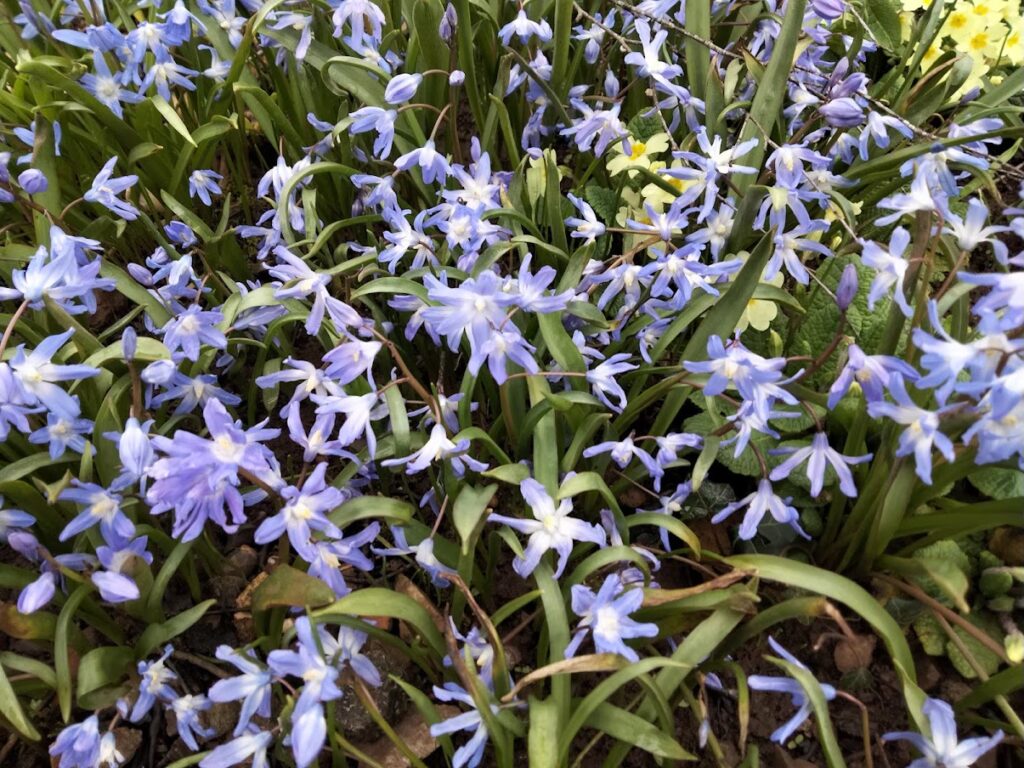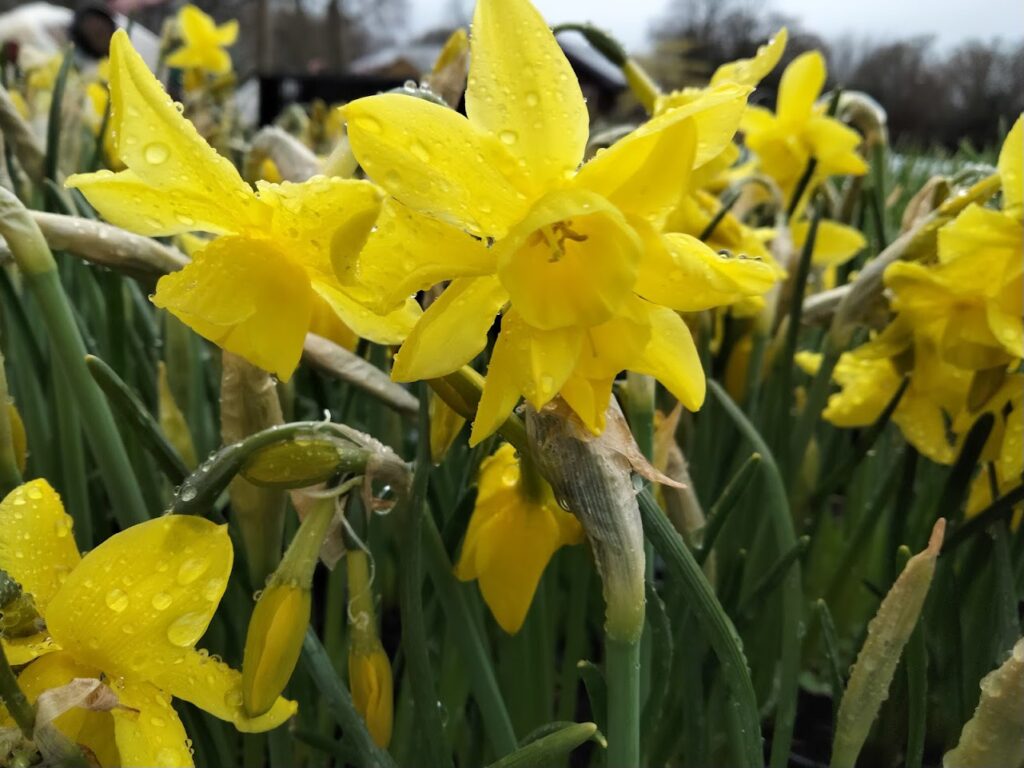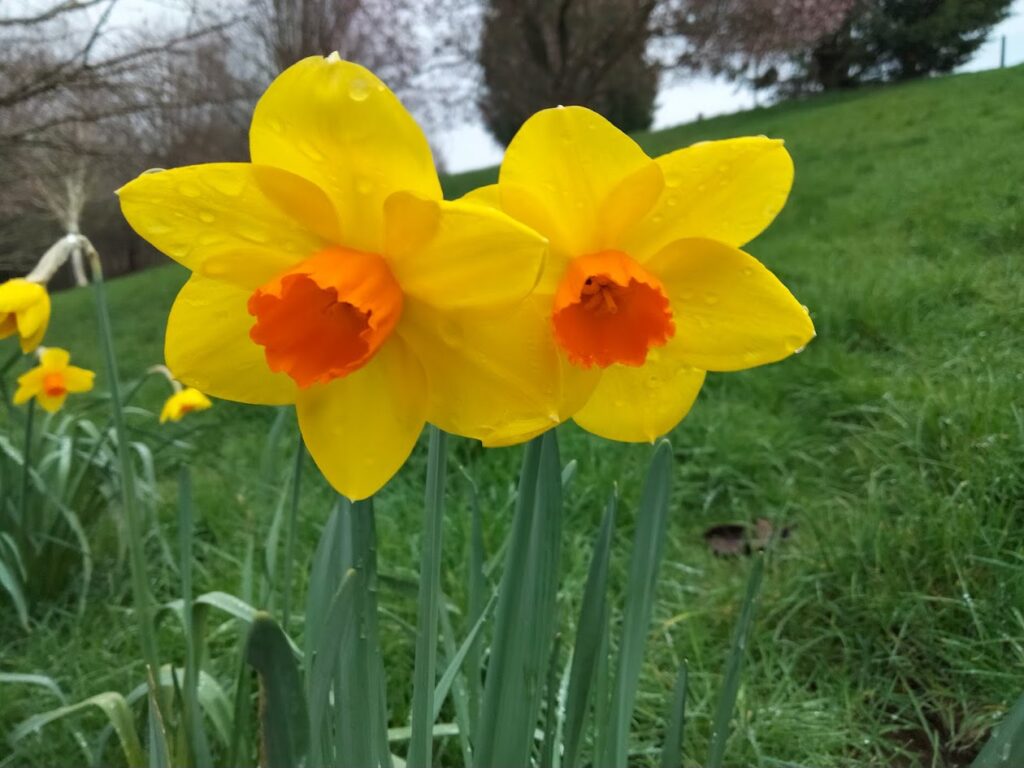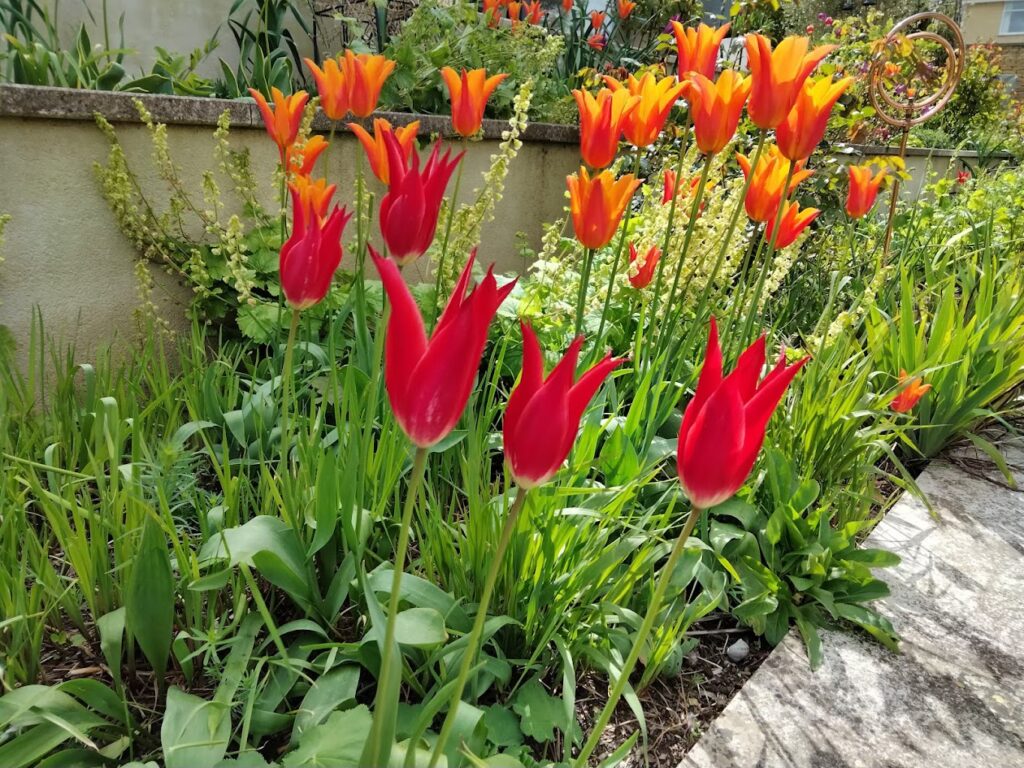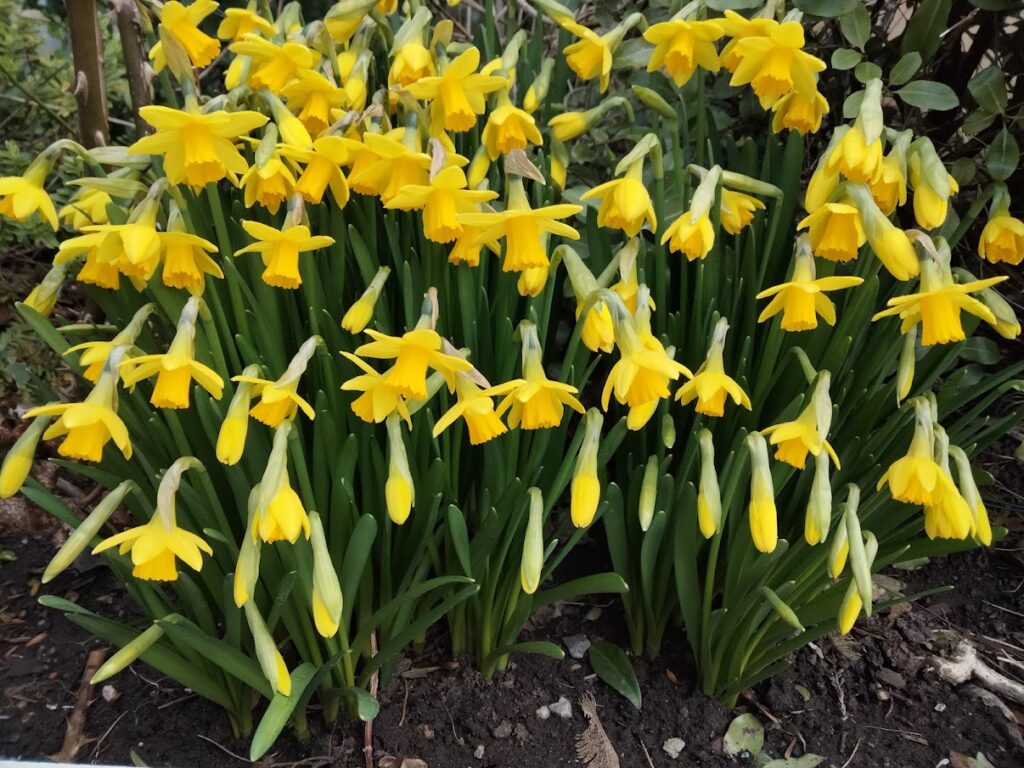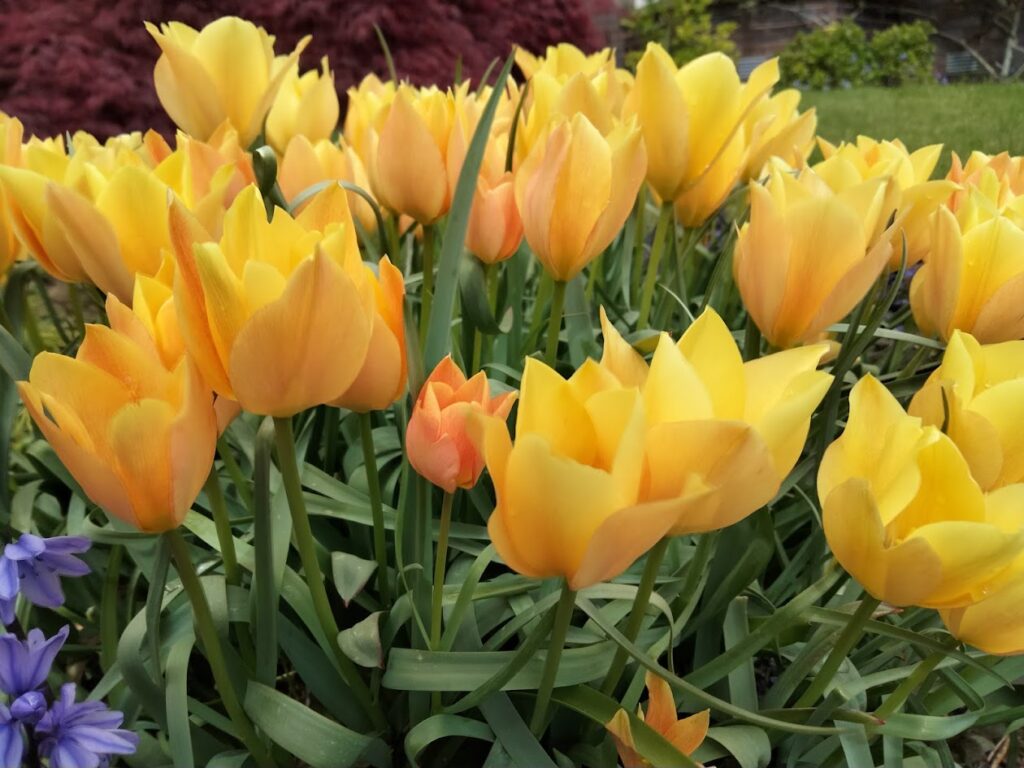Thoughts of spring
As our summer begins to wane and September arrives our garden centers and nurseries fill up with bulbs for the spring. This is always a marvelous time of year for us gardeners as we move our thoughts to a spring display, whether we are starting from scratch or adding to bulbs that we already have in the garden. Bulbs bring light and joy to our gardens after the dullness of winter.
In saying this quite a lot of bulbs are flowering in January and February. In January we have winter flowering jewels like Cyclamen Coum, these small bulbs (corms)start often flowering late December but come in to their own in January into February and are often flowering with snowdrops. These bulbs come in three main colors white, pink, and a dark pink often referred to as red. They have small dark green kidney shaped leaves on the whole but with modern hybridization some leaves are pewter in colour and some look like they have a Christmas tree within the leaves.
Next to flower is the winter aconites (Eranthis). These small bulbs produce a stalk with a green ruffle within a glorious golden yellow cup. Easy to grow and spread around easily from seed giving a pleasant naturalized look. Another bulb (corm) that also flowers at this time is Crocus tommasinianus, with their lavender, purple, white or pinky flowers. These like winter aconites are great for naturalizing and also look great with snowdrops.
By far the biggest group of bulbs for the spring are the daffodils (Narcissus). This is a vast group of plants with a flowering period from February right though to end of April. The flowers for these bulbs are either single, doubles and multi-headed. Daffodils are also often or mostly yellow however there are also white and bi-colours. There are thirteen different groups or divisions of daffodils. For instance, most daffodils flower in March and most that flower in this time are the Trumpets and large cupped flowers. A good large flowering cup daffodil is Narcissus King Alfred (trumpet) or Narcissus Carlton (large cup). A lovely small cupped variety and white with a hint of lemon in the trumpet is Narcissus Ice follies. These are also often used as naturalizing in the hedgerows and at the entrances to towns and villages. I must say I am fond of the multi-headed and bi-colour and the shorter alpine types. After moving into my new home, I have been taken with split corona types. Most Narcissus are scented, some more than others.
The next pretty large group of bulbs are the Tulips. Like the Daffodils they can be flowering Late February and will continue flowering well in to May. I often fine the early flowering tulips in the ground are often eaten by early slugs out and about. These bulbs again are single, doubles and multiheaded. The colour range is vast from white to black and every colour in-between. Personally, I like the lily shaped Tulips. These flower mostly end of April and in to May. The alpine varieties are good for naturalizing and clump up pretty quickly. Most Tulips are goblet shaped flowers and there are fifteen differ types (divisions).
The next bulb to make a splash in our gardens and the Ornamental onions (Alliums). These can be quite stately with there large globe shaped flower heads carried on stiff stems in electric purple (Allium purple sensation) to glorious crystal white globes like Allium Mount Everest . If you fancy a bit of flare there are Alliums that look like fireworks. The best for this is Allium Shubertii and Allium Christophii.
Other much smaller bulbs like the Anemone, Chionodoxa, Cammasia, Crocus, Fritillaria, Iris, Muscari,
Usually sold as multipack are all great for multiplying quite quickly and also useful for naturalizing effect in our gardens.
Remember when selecting bulbs for your garden or pots is the amount of leaf that will occur after the flowers have finished flowering. This is particularly relevant with Narcissus where the leaves need to be left on the bulbs for a minimum of six weeks to allow the bulb to bulk up again for the next flowering season. Leaves from all bulbs should only be removed once they have gone brown.
When planting bulbs in your garden as a rule of thumb the bulbs are normally planted 2x depth of the bulb (size). However, with daffodil and tulips they can be planted deeper. In the case of tulips, it stops the squirrels digging them up. You can plant bulbs any time providing there the ground is not frozen and definitely before the end of November. Bulbs planted after Christmas or in the new year may flower later than stated on the packet or not flower at all.
You can also make a spectacular display of bulbs if you either plant individual variety in pots or layer up different varieties in one pot. Use a mix of multi-purpose compost and soil-based compost (John Innis no2/3) to give your pots weight and free draining sub straight. Once your bulbs are finished, allow the leaves to die away and then de pot and plant in the garden or keep them in a dry place for next seasons planting.
Whatever way you choose to plant your bulbs enjoy a stunning display in the fourth coming spring.
Below is a gallery of pictures relating to September

